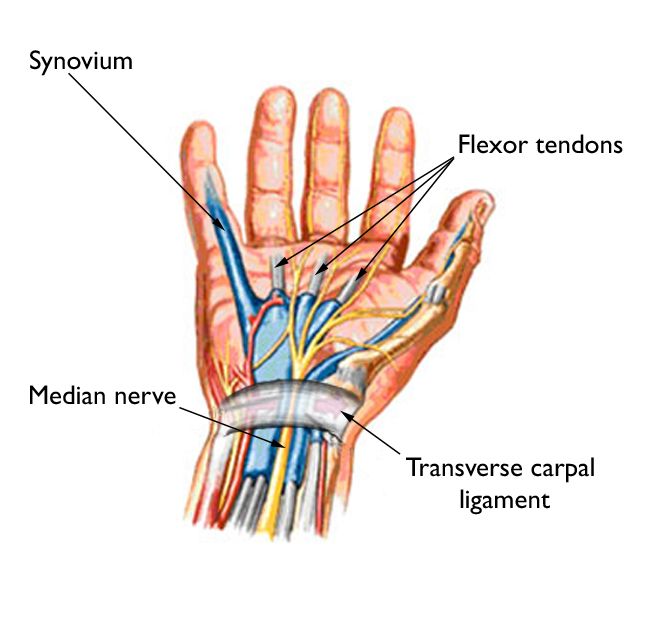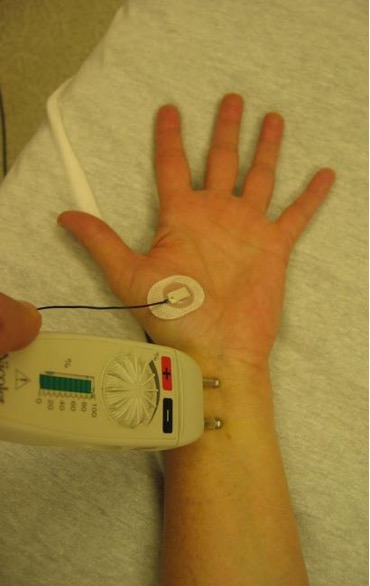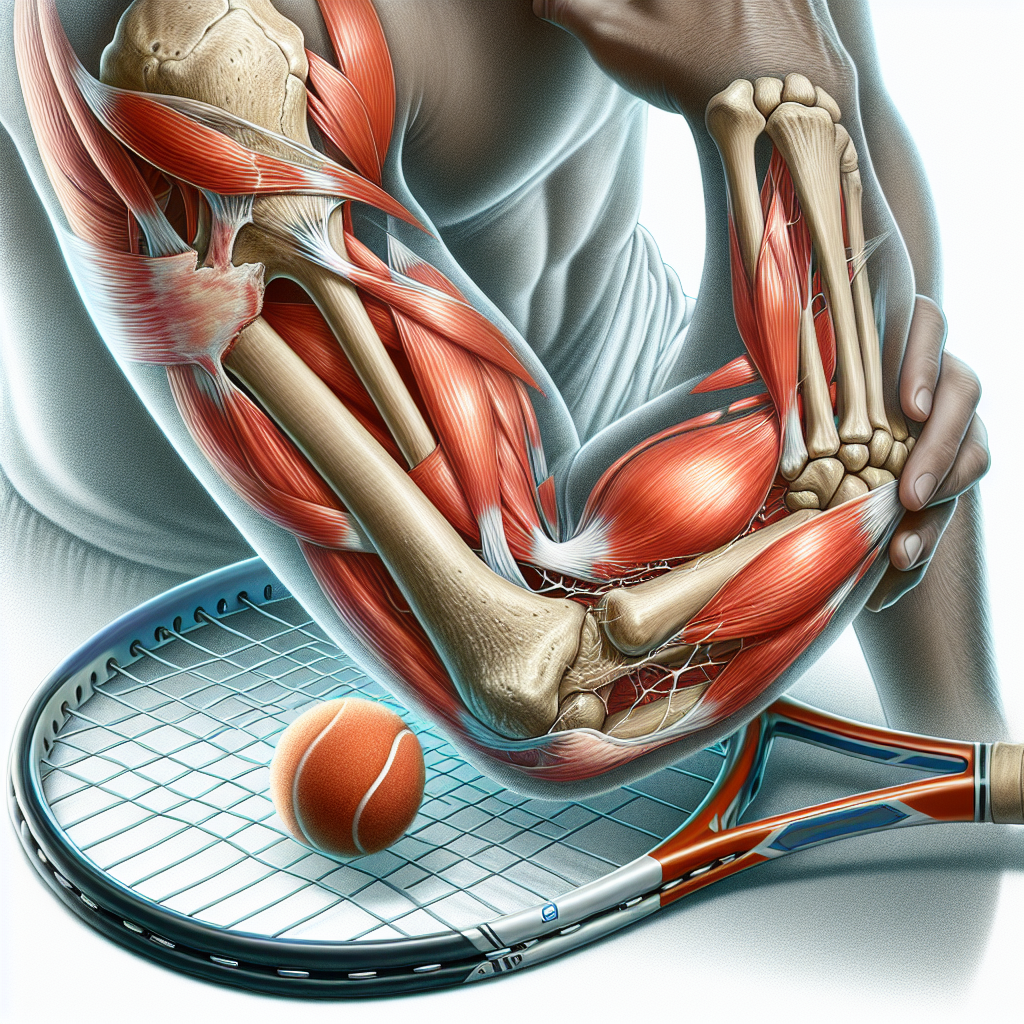Dr. Sathya Vamsi Krishna
Hand, Upperlimb & Reconstructive Micro-Vascular Surgeon,
Brachial Plexus & Peripheral Nerve Surgeon, Bengaluru
MBBS, MS Orthopaedics, European Diploma in Hand Surgery
FHS (NUS, Singapore; CMC Vellore; Institute Kaplan)
understanding Carpal tunnel Syndrome with Dr sathya Vamsi Krishna
What Is carpal tunnel syndrome?
Carpal tunnel syndrome happens when an important nerve that runs through your Wrist is pinched. This is the median nerve. The median nerve goes into all your fingers except your little finger, called the pinky finger. It gives feeling to those fingers. It also controls the muscles at the base of your thumb. The median nerve lies in the part of your hand called the carpal tunnel. The carpal tunnel is a narrow passageway. It runs from the wrist into the palm. The roof of the carpal tunnel is a ligament called the transverse carpal ligament. This ligament stretches over the tunnel from one side of your wrist to the other.
At times, this ligament becomes swollen. When it swells, it may put too much pressure on the median nerve. The pressure on your nerve is why you have symptoms of carpal tunnel syndrome.

What causes Carpal Tunnel Syndrome?
Carpal tunnel syndrome is a common condition. The exact cause is not known. It can happen to anyone. But it is more likely to happen to adults who often repeat the same motion with their fingers or hands. And it is more likely in female population.
Symptoms can happen for many reasons. They can happen if you:
- Sleep with your hand in a tight fist.
- Sleep with your wrist bent.
- Often do the same movement with your hands, fingers or wrists. This includes people who are in mechanics and farmers. It includes those who often use a keyboard and a computer mouse.
- Take part in activities that cause your hands to vibrate, such as when you drive or use heavy machinery.
Some health conditions, such as diabetes, thyroid disease and rheumatoid arthritis, increase the risk. These conditions may cause swelling in the carpal tunnel. Carpal tunnel symptoms also are common during pregnancy because fluid may build up in the body.
Pressure on the median nerve also may happen for other reasons, such as:
- Fractures in the wrist or lower arm.
- Arthritis in the wrist.
Possible Symptoms of Carpal Tunnel Syndrome
Symptoms of carpal tunnel syndrome are mild to severe. One or both hands may feel numb and burn or tingle. Typically, the thumb, index and middle fingers feel numb. Carpal tunnel syndrome may affect part of the ring finger as well. It is also is possible for the entire hand or arm to feel numb. Pain may travel to the arm and into the shoulder.
At first, symptoms may come and go. As the condition gets worse, symptoms may happen more often and then not go away. Symptoms may happen in both hands. For some, they may become worse in one hand. Symptoms also may be worse at night.
They may cause you to wake from a sound sleep.
When you have carpal tunnel syndrome, your symptoms may become worse when you do common tasks. Examples include when you use a keyboard and mouse or when you text on your phone. They also include when you knit or hold a newspaper or book.
Gripping motions that you repeat may cause symptoms. These include when you write, hold a golf club or sports racket, or peel vegetables. You may have symptoms when you do activities that cause your hands to vibrate. Examples include when you drive or use heavy machinery.
With severe carpal tunnel syndrome, most people lose feeling in their fingertips. This makes it hard to pick up small objects. If you damage your median nerve, you also may lose strength in your thumb.
How Is Carpal Tunnel Syndrome Diagnosed?
Common symptoms often help your care team identify whether you may have carpal tunnel syndrome. Members of your care team may ask you questions about your symptoms. They may then use one or more of the following tests to diagnose the condition.
Physical exam
Your care team may test the feeling in the fingers and the strength of the muscles in the hand To trigger your symptoms, they may bend your wrist or tap or press on your median nerve.
X-rays
Your care team may take X-rays of the wrist that has symptoms. They do this to make sure there is no other cause for your pain, such as arthritis or a fracture.
Ultrasound
An ultrasound of your wrist may show swelling of the median nerve.
Electromyography
This test measures the tiny electrical discharges in muscles. It can show damage to the muscles that the median nerve controls. It also may rule out other conditions.
Nerve conduction study
Like electromyography, this test measures whether electrical impulses in the carpal tunnel are slow. It also may rule out other conditions.
Your healthcare professional may suggest a specialist
If your symptoms can be due to another medical condition, you may see a specialist in any of these areas;
- Neurology, where specialists treat brain and nervous system conditions. Some neurological conditions cause nerve problems throughout the body. Some of the symptoms may seem like carpal tunnel syndrome.
- Rheumatology, where you may have an exam for arthritis or rheumatic conditions.
- Hand surgery if you may need surgery.

Common Treatments for Carpal Tunnel Syndrome
There are several treatments for carpal tunnel. The best treatment for you may depend
on your symptoms. The right treatment often eases your symptoms. This may allow you to use your hands as you usually do.
It is best to treat carpal tunnel syndrome symptoms as soon as possible. In the early stages, you can try simple ways to make symptoms go away.
Treatments for early symptoms
When you first notice symptoms, the best thing you can do is to stop activities that bother you. For some people, this is not always possible. For example, the activity may be part of your job. But when you change how you do that activity, you may lessen stress on your hands and wrists. You also may need to change your daily routines. Try not to stay with one activity too long. Throughout the day, as much as possible, spread out activities that bother you.
Avoid actions and activities that may make your symptoms worse. For example:
- Do not hold items for long periods. Examples include a cellphone, tablet or e-reader. They also include a newspaper, book or TV remote. They include a tool like a rake or a paintbrush.
- Do not press hard on a keyboard. Use a keyboard with keys that are easy to press.The keyboard also should be a good size for your hands.
- Do not use a hard grip. Do not grip anything too tightly. Examples include when you scrub dishes, drive a car or carry items. Relax your grip often. Even a break of a minute or two may help.
Do not do repetitive pounding. This includes stapling or using a hammer. Do not use your hand as a tool to bang or pound something.
Do not use power tools. Try not to use objects that cause vour hands to vibrate.
This includes drills and jackhammers. If you do this kind of activity, it may help to use anti-vibration gloves. Wear the gloves for driving. Wear them when you use at work. Wear them when you equipment that causes your hands to vibrate.
Do not write, weed a garden or do needlework. Avoid any activity where you often pinch or bend your fingers.
Do not bend your wrist too far up or down. This includes carrying a tray on an open palm, like a food server. It also includes resting your head on your open palm with your wrist bent backward. And it includes letting your hand hang down off the end of an armrest. You likely use a tight grip when you pick up or hold small items. That can increase your symptoms. It may help to buy larger items. It also may help to add a layer of foam tubing around items you use. This makes it easier 10 kola them. It puts less pressure on your grip. Examples include golf clubs, (ceasies to bed “bene is and pens. If you choose a gel ink pen or a fountain pen, you may, not have to press as hard to write.
Treatments you can try at home
If your symptoms are mild, you may be able to lessen swelling in your carpal tunnel at home. his puts less pressure on your median nerve. Along with changes to activities that cause your symptoms, these home treatments may be enough to bring you long-term relief.
- Rest your hands. Stop or limit the action that causes your symptoms. If that is not possible, take breaks often.
- Wear a splint when you sleep or rest. A splint takes pressure off the median nerve. Do not wear a splint when you use your hands for regular activities.
- Apply heat. Heat may reduce swelling and muscle tension. Soak your hand and wrist in warm water. You can do this as often as you need to for relief. Try fingerless gloves to keep your wrists warm when you must use your hands.
Use ice. Soak your hand and wrist in an ice bath or use an ice pack. If you use an ice pack, do not place ice directly on your skin. Place a thin towel between the ice pack and your skin. The cold can give you temporary relief and reduce swelling.
You can do this as often as you need to for relief.
Massage. Gently massage your hand, wrist and fingers.
Do exercises to stretch your hand. For example, make a fist, then open your hand and slowly spread your fingers. Do this 5 to 10 times. These stretches may lessen the pressure on your wrist.
Nonprescription medicines. Medicines you can buy without a prescription may help with swelling and pain. Examples include acetaminophen. Talk with your care team before taking any new medicines.
When You Sit at a Desk and Use a Computer
People often have jobs where they use a computer with a keyboard and mouse. Carpal tunnel symptoms may happen when you stay in one position for a long time. Or when you do the same actions over and over. Poor posture is another common cause of carpal tunnel syndrome. How you sit andvuse your arms and wrists may make symptoms worse. Good posture may help to prevent or ease symptoms. See Figure 2.
Simple changes to your work area may help. Here are a few things to think about in an office setting.
What is ergonomics?
Ergonomics is the study of how your environment affects your body; This includes how you sit and use your hands. it also includes how you set up your office and equipment.
Several ergonomic office products, including chairs and keyboards, are available to buy. Some of these may help prevent or ease carpal tunnel syndrome. But each person is different. It is best to try an item and find out whether it works for you.
Desk and chair
Look for an ergonomic chair that allows you to change the height of the chair and the armrests. The chair should support the curve of your spine and lower back.
Keep your elbows close to your body at 90-degree angles. Your elbows should rest comfortably on armrests and desk. You should not have to stretch your arms.
Put your feet flat on the floor. Try to keep your legs at a 90-degree angle. Use a footrest if you need to.
Your desk should be wide enough for you to reach your arms straight out. Your fingertips should touch the front of your monitor. The distance allows room on the desk for your keyboard to be directly in front of you. In this position, you do not have to stretch your arms and wrists to type. You also need enough space to move your mouse freely while you keep your wrists level.
While a desk and chair matter, your keyboard and mouse may make the most difference with carpal tunnel syndrome.
Keyboard and mouse
If you use a laptop, keys that are very close together on the keyboard may cause problems with your wrists. This also may happen if you use a touchpad as a mouse.
Think about using a separate, larger keyboard. Try out different styles of keyboards. Find out what is right for you. Most ergonomic keyboards have a separation or space in the middle. The keys have a slight angle to the left and right. This allows your wrists to be in a more natural position. You also may want to try a desktop computer with a full keyboard.
If you use a mouse, try an ergonomic mouse. It lets you keep your hand in a neutral position. Avoid the use of a large roller-ball type mouse. It may tilt your wrist back and cause symptoms. When you choose a mouse, it should fit into the cupped resting position of your hand.
Your keyboard and mouse should be on the same level. Position your chair to align your arms and wrists with the keyboard. Elbows should be at about 90 degrees. This position allows you to type with flat wrists. Use a palm rest or a padded desk edge if you need to.
Sometimes, changes to your activities and environment do not do enough to relieve your symptoms. Carpal tunnel syndrome can be treated in other ways. These include medicine, injections and procedures.
When To See a Healthcare Professional
If your symptoms continue or are more severe, you may need to see a healthcare professional. Your health professional may recommend corticosteroid medicine to ease your pain.
Corticosteroid injections
For severe symptoms, you may need corticosteroids. Corticosteroids are medicines that bring down swelling and relieve pressure on the median nerve. Typically, this medicine is injected into the carpal tunnel. Ultrasound is used to guide these injections.
How well corticosteroid injections help to lessen symptoms is different for each person. How long they last also may be different. Oral corticosteroids typically do not help as much as injections for relief of carpal tunnel symptoms. You and your care team decide if corticosteroid injections are best for you.
Corticosteroid injections and lifestyle changes during and after this treatment may be enough to ease symptoms and stop swelling.
For some, injections may not give enough relief. If you still have symptoms, talk to your care team about what procedures may help ease your pain.
Carpal Tunnel Release Procedures
A common way to treat severe carpal tunnel syndrome is with a release procedure.
Typical carpal tunnel release procedures include:
- Open carpal tunnel release.
- Endoscopic carpal tunnel release.
The goal of each procedure is to release pressure on the median nerve. To do this, the surgeon cuts your transverse carpal ligament. See Figure 3.
Note: Each procedure typically takes about 20 minutes. You usually can have someone drive you home an hour after the procedure.
Open carpal tunnel release
For this procedure, your surgeon makes an incision just below your palm. The ligament is then cut to release the pressure on your median nerve. Recovery from an open carpal tunnel release procedure may take 6 to 8 weeks.
Endoscopic carpal tunnel release
For this procedure, your surgeon may make one or two small incisions in your wrist and palm. The surgeon then inserts a thin surgical tube into your incision using a camera and cutting device. The surgeon uses the device to cut the ligament and release the pressure on your median nerve.
Recovery from endoscopic carpal tunnel release may take 3 to 4 weeks.
For most, carpal tunnel release procedures are successful at symptom relief. If symptoms make it hard for you to do your usual activities, talk to your care team.
There are several ways to ease symptoms of carpal tunnel syndrome. Without treatment, mild symptoms may become severe. Your care team can answer any questions you have about this information or carpal tunnel syndrome. The team is here to support you.
Recovery After Surgery
- Elevate your hand and move your fingers to reduce swelling.
- Pain, swelling, and stiffness are common.
- Nighttime symptoms improve quickly.
- Grip and pinch strength return within 2 to 3 months, or up to 12 months in severe cases.
- Numbness and tingling improve over several months, but may not fully return in severe cases.
- Splinting may be needed after surgery.
- Light activities can be resumed soon after surgery.
Possible Complications
- Bleeding.
- Infection.
- Wound healing problems.
- Nerve irritation or injury.
Outcomes
- Most patients experience symptom improvement after surgery.
- Recovery can take up to a year.
- Hand therapy may be recommended.
- Recurrence is rare.
Conclusion
Tennis elbow is a common and often debilitating condition that can significantly impact your daily activities and quality of life. However, with the right approach and a comprehensive treatment plan, relief from pain and restoration of mobility is achievable.
By understanding the symptoms, seeking proper diagnosis, and exploring various treatment options, including self-care techniques, braces or supports, exercises, and alternative therapies, you can effectively manage your tennis elbow and regain the ability to enjoy your favorite activities without limitations.
Remember, prevention is key. Incorporating proper technique, strength training, and ergonomic practices into your routine can help reduce the risk of developing tennis elbow in the first place.
If you’re experiencing persistent or severe elbow pain, don’t hesitate to seek professional help. Early intervention and a personalized treatment plan can significantly improve your chances of a successful recovery.
If you’re struggling with tennis elbow and seeking relief, consider trying our premium tennis elbow brace. Designed with adjustable compression and targeted support, our brace can alleviate pain, reduce inflammation, and promote healing. Visit our website today to learn more and take the first step towards restoring your mobility and enjoying the activities you love once again.
With the right mindset, dedication, and a comprehensive approach, you can overcome the challenges of tennis elbow and regain the freedom to live an active and pain-free life.
Subscribe Our Newsletter
Subscribe to our newsletter to get expert tips on hand, wrist, elbow, shoulder, and nerve health — straight from the desk of Dr. Sathya Vamsi Krishna.

Quick Contact
- +91-9900051111
- 4ac- 404, 4th A Cross Rd, HRBR Layout 2nd Block, HRBR Layout, Kalyan Nagar, Bengaluru, Karnataka 560043, India
- [email protected]
- Pincerclinic 2025. All Right Reserved
